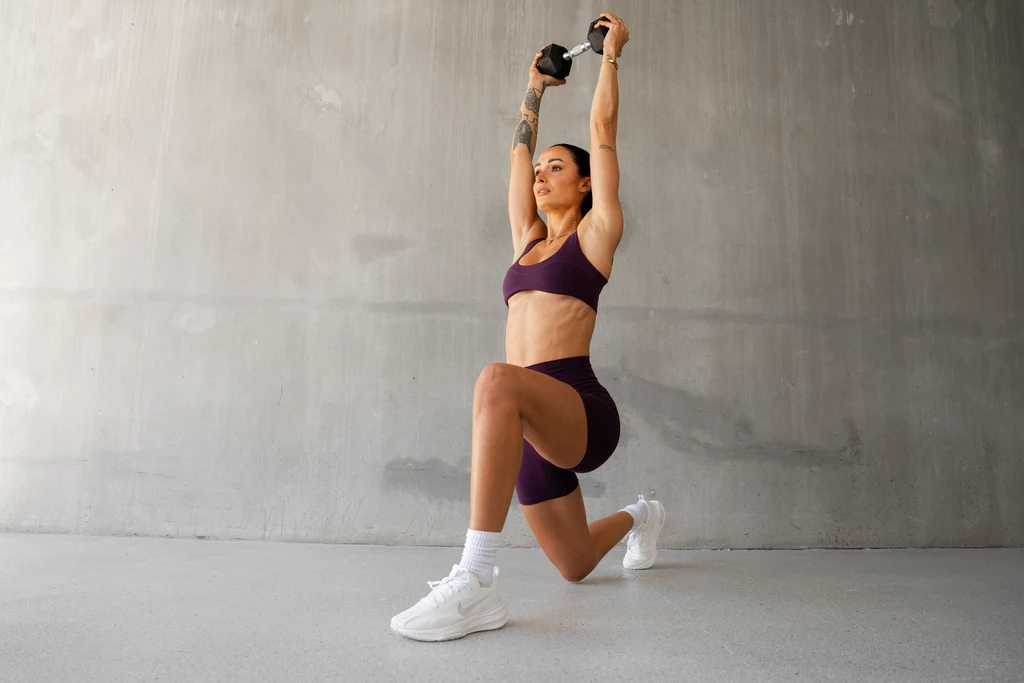This Is How Many Exercises Should You Do In A Workout
Here’s what you should consider to determine your perfect number.

February 7, 2025 - Updated February 7, 2025

When starting a fitness routine for the very first time, switching things up with a new training style, venturing into a gym environment or pursuing a different goal, one of the most confusing elements can be knowing how many exercises you should include in each workout.
One of the best parts about the Sweat app is that all the guesswork is taken out of planning your week, whether you’re choosing individual workouts from the On Demand section or following a program. The finer details - how many exercises, sets and reps - is all left in the trusty, professional hands of our incredible Sweat trainers.
But if you’re trying to structure your own workouts or are wondering why your Sweat program has a particular number of exercises per workout, this guide will help to break it down.
The perfect number of exercises…
… really depends on what you want to get out of your workout! We know that’s not the short and sharp answer you want to hear, but hear us out.
The ideal number of exercises for your workout depends on several factors such as:
What your training goals are (such as muscular endurance, strength, muscle size or general fitness)
What kind of training style you enjoy (such as heavy lifting, Pilates or HIIT)
Which muscle groups your workout is focused on
How much time you have available
How many workouts you’re doing each week
Rest assured - the ideal number of exercises per workout doesn’t increase as you progress from beginner to intermediate to advanced. In fact, some of the most advanced lifters focus on a small number of exercises in each session.

The perfect number of exercises for different workout types
Strength training
As a general recommendation for a strength training workout, somewhere between four and six exercises is a good sweet spot - especially if you’re performing compound exercises that work multiple major muscle groups at once (such as squats and deadlifts).
If you’re focusing on heavy lifting and building your strength with longer rest periods, you might opt for fewer exercises. If you’re going for variety or your workout is structured with supersets or trisets (meaning two or three exercises back to back) you might have a higher number.
Think of it this way - you’re not going to see noticeable strength gains in your squats if they’re one quick exercise for you to get through with 20 other movements in your workout. For ultimate strength gains, it’s better to choose a muscle group to hone in on for your session and perform multiple sets of a smaller number of exercises using weights you find challenging.
Muscle building
Building muscle size - aka achieving hypertrophy - often lends itself to workouts with roughly six to eight exercises, including a mix of compound lifts and smaller isolation or accessory exercises to fatigue the muscle if you have time (such as bicep curls).
When following a muscle building workout, your weekly schedule will typically have a muscle group split to ensure you are adequately fatiguing your muscles and allowing them time to recover and build.
In Kelsey Wells’ PWR program for example, each week includes workouts designed for your Chest & Triceps, Legs & Abs, and Back & Shoulders. Other programs follow a structure involving Upper Body, Lower Body, and Full Body days, or you could even do three Full Body workouts with a day of rest between each.
Full body vs targeted muscle group splits
Although a full-body workout may sometimes have a slightly higher number of exercises, this is not a blanket rule. You could still have an incredibly effective full-body session with three exercises to target your upper body and three exercises for your lower body - especially if they’re compound movements!
HIIT & circuit training
If you’re doing a HIIT workout or circuit training, the emphasis is generally on getting your heart rate to spike repeatedly rather than to build strength, so this style of workout may have a small circuit of exercises repeated several times, or a higher number of exercises (eight or more) performed one after the other. If you love variety and trying lots of different exercises, this could be the perfect training style for you.
Take Kayla Itsines’ popular HIIT program OG Kayla for example. Each workout consists of four 7-minute circuits for a total of 28 minutes of work. Each circuit involves four exercises that will challenge your muscles and cardiovascular system, with a short rest in between each circuit.
Pilates & yoga
Pilates and yoga are a whole different ball game. Structured in a flow or sequence, you could easily have more than 10 or 15 exercises or postures in one session depending on its duration and style.
Structuring the best workout for you starts with knowing what you’re trying to achieve. Nail that down and the number of exercises you should be doing will naturally become a whole lot clearer. Better yet, try out the Sweat app for free and enjoy never having to figure out how many exercises to do.

Erin is a writer and editor at Sweat with years of experience in women's publishing, the fitness industry, media and tech. She's passionate about the power of movement, and you can often find her on a yoga mat, a hike, a dance floor, in the ocean or the gym.
* Disclaimer: This blog post is not intended to replace the advice of a medical professional. The above information should not be used to diagnose, treat, or prevent any disease or medical condition. Please consult your doctor before making any changes to your diet, sleep methods, daily activity, or fitness routine. Sweat assumes no responsibility for any personal injury or damage sustained by any recommendations, opinions, or advice given in this article.
Fitness